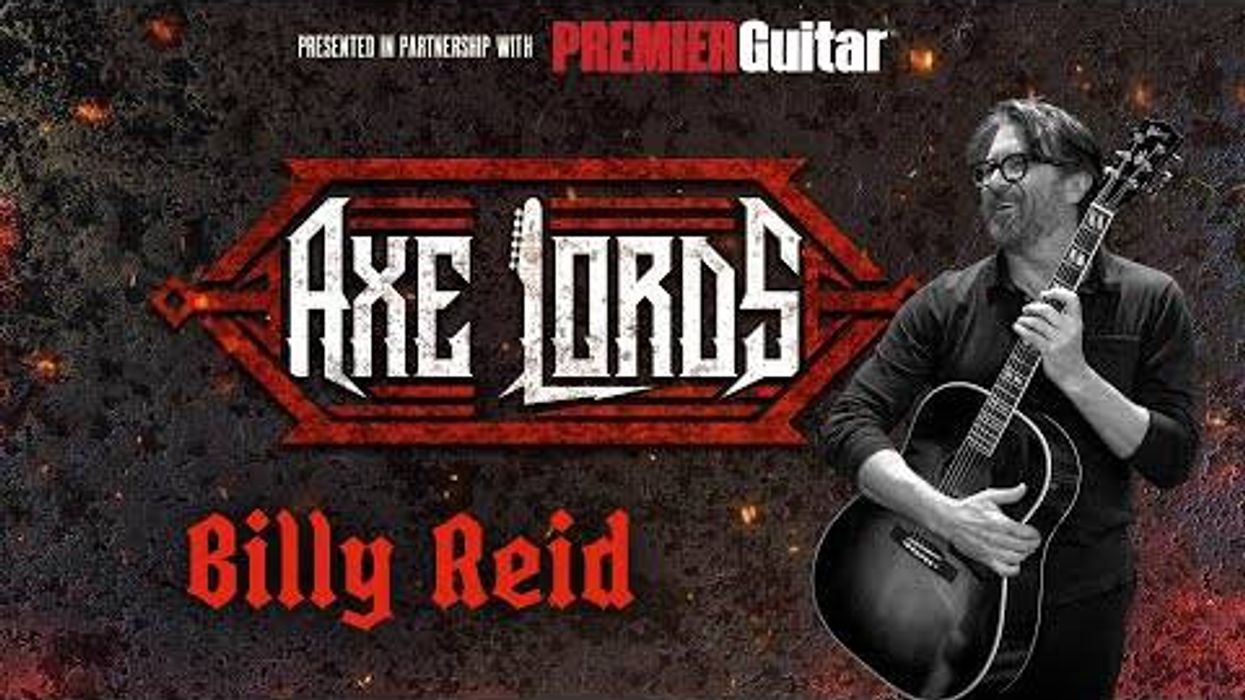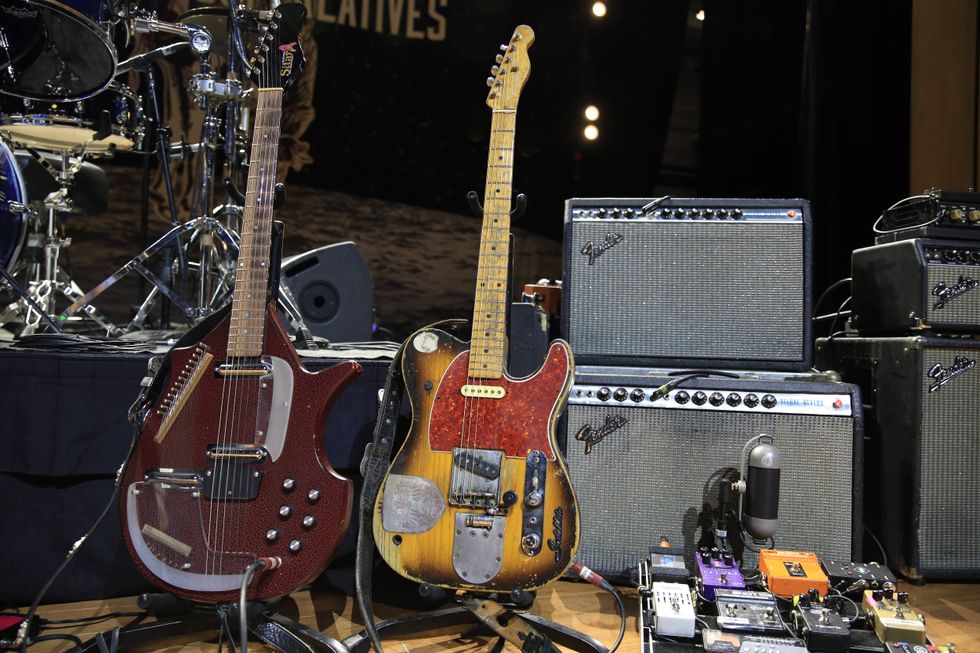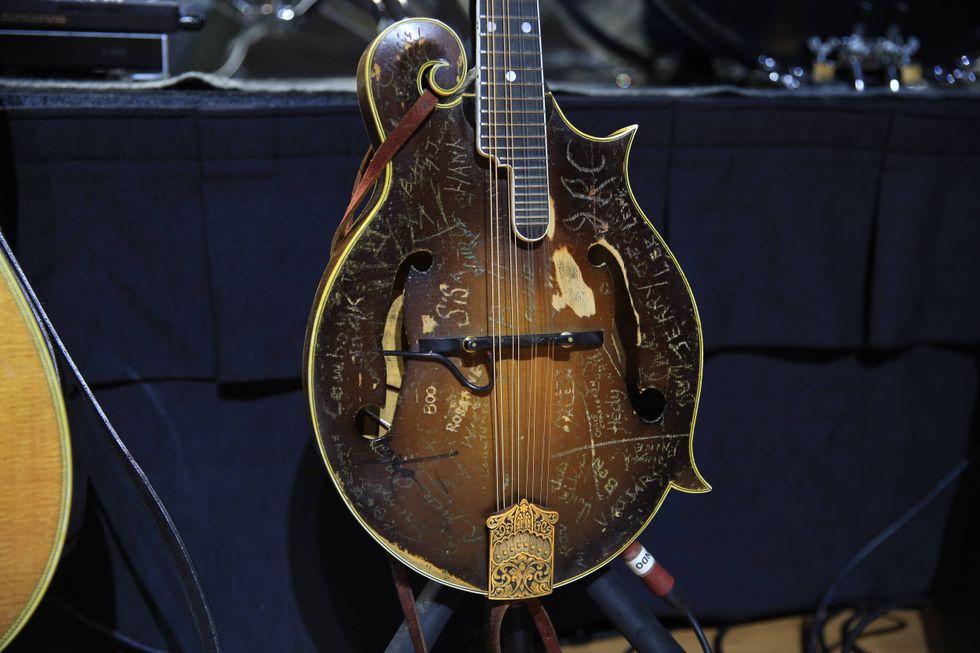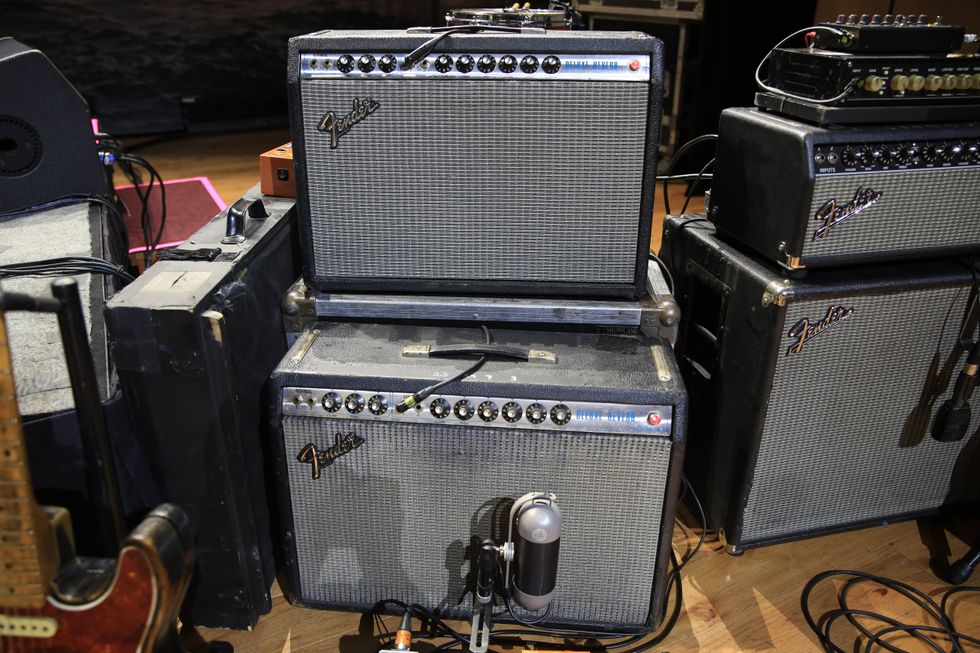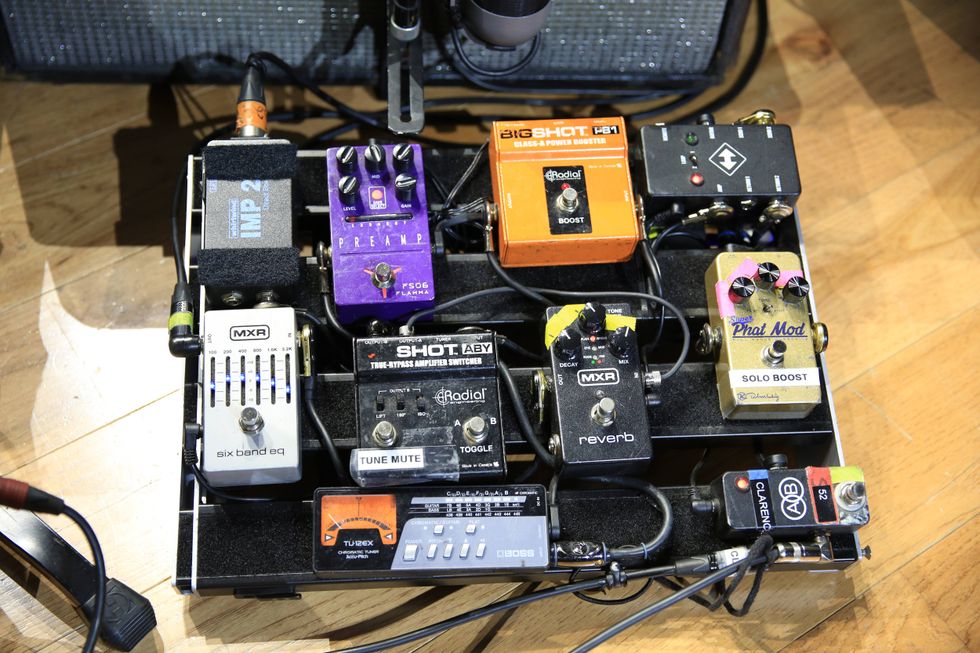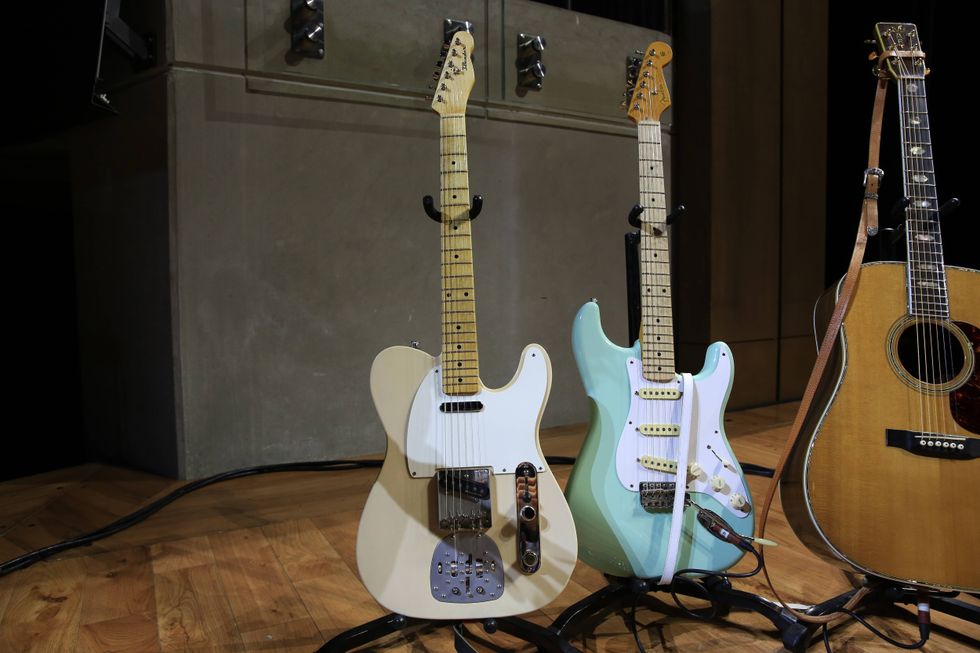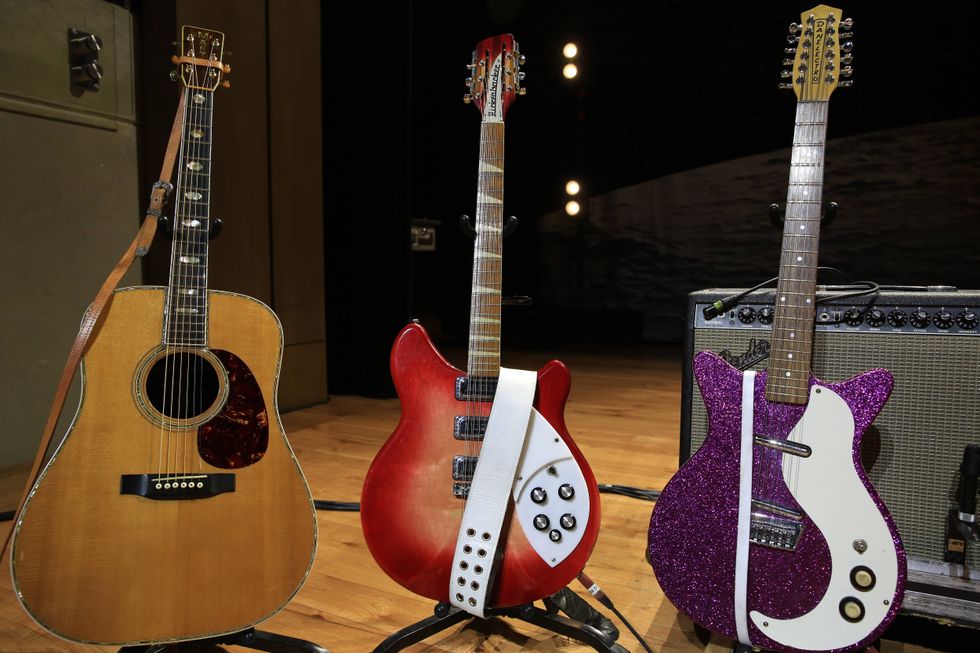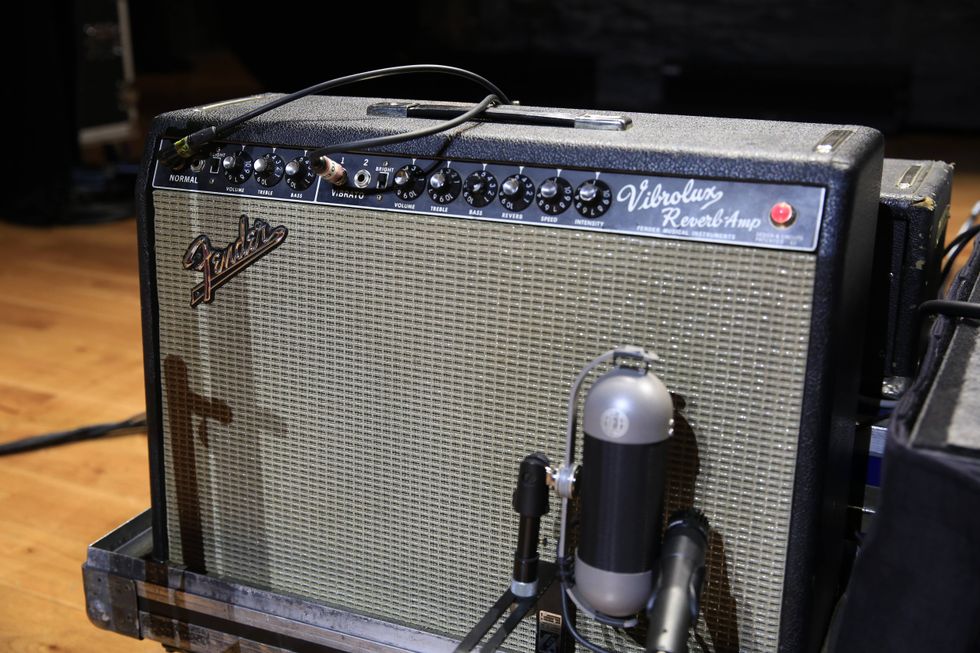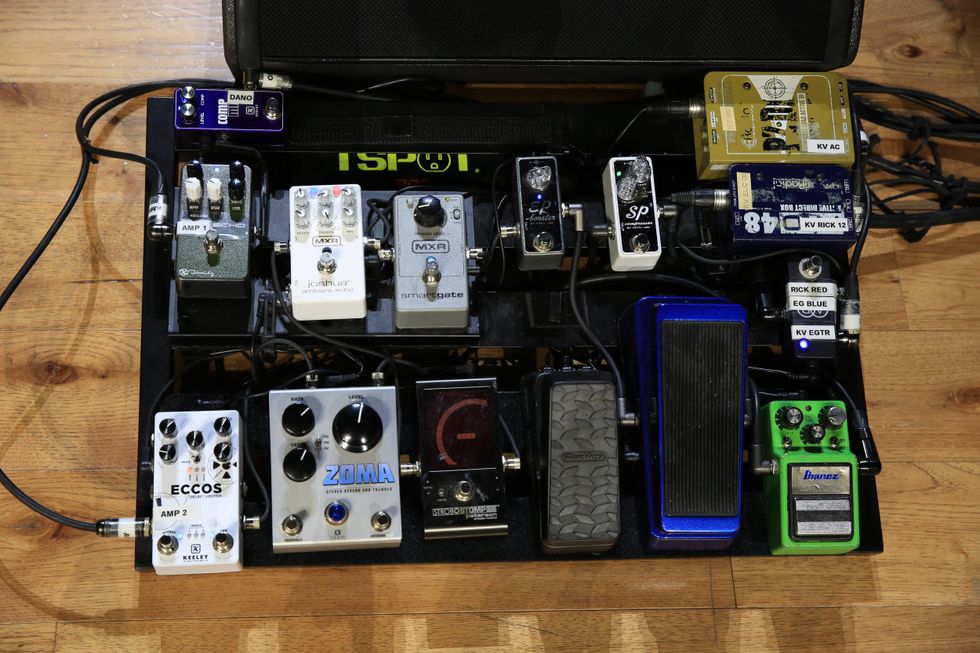| Grammy Gallery Click here to see a photo gallery of Backstage at the Grammys |
Premier Guitar had a chance to crawl around in the belly of the beast— the Staples Center, as it was configured for the 52nd Grammy Awards show—in order to report on the gear involved and the behind-the-scenes effort that makes Music’s Biggest Night happen. Here’s what we found…
The evening involved a handpicked crew of 38 audio engineers and technicians, 160 stagehands, 150 event technicians and 26 stage managers. It took 40 riggers 7 days to hang 130 tons of lighting, sound equipment and set pieces from the ceiling. 300 chain motors hoisted it all to 260 anchor points and 70 fall protection points. 3000 feet of trussing was involved. More than 450 mics were used, (80 were wireless). The 100,000-watt house sound system involved four Yamaha PM1D consoles, 94 speaker cabinets flown from the grid, with a cluster of 12 subs in the middle, 9 delay clusters to solve timing issues throughout the venue, and 14 fill speakers under the stage so that the celebs in the first few rows could hear a good mix.
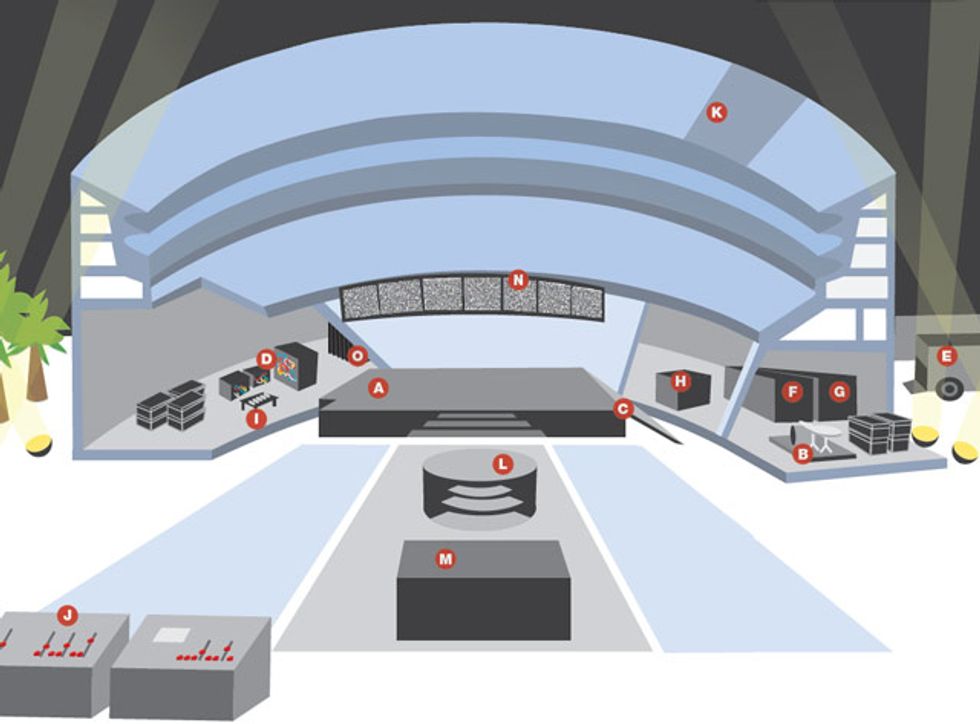
Click here for a larger version of the chart
A. The Stage is wide enough to act as two stages (left and right) so that one side can be set up/ struck while the other hosts a live performance.
B. Stage platforms on wheels allow bands to have individual rigs set up and ready to go. They are wheeled on stage and locked together for a performance, then unlocked and wheeled off afterwards. Each stage platform houses a mini snake that can route all the musician’s signals to the boards via one connection.
C. This ramp is a high traffic area during the broadcast, with stage platforms full of backline gear and sets being wheeled on and off after each performance.
D. Splitsville is where transformer splits send audio signals from the stage platforms to 4 places: FOH, the monitor mixing station (not pictured), the mixing trucks outside the Staples Center, and the broadcast mixing board (as a backup). The signals for the mixing trucks are converted to digital and sent via fiber optic lines.
E. Two audio mixing trucks outside the Staples Center, operated by co-music mixers Eric Schilling and John Harris, are used to mix the audio for the performances. Both are equipped with identical Digidesign ICON boards so that presets for each channel of audio for each act can be dialed up immediately. The signals from these trucks is sent to the broadcast mixing board.
F. A broadcast mixing board, operated by Tom Holmes, combines lines from the music mix with other presentation elements like presenter mics, video playback, and audience hot spots into the broadcast’s 5.1 surround sound mix. Broadcast audio supervisor Phil Ramone is stationed in this truck, too. The other half of this truck houses the broadcast’s video team.
G. The graphics team is housed in this truck. Broadcast graphics include nominee and winner names and titles, “Coming up next…” slates before commercials, final credits, etc.
H. The playback booth is where audio techs control the rare pre-recorded elements of a Grammy performance, such as string sections and hip hop samples. The Recording Academy takes great pride in the fact that very few canned elements are used these days. It’s not unusual for large string sections to be mic’d and used live on stage for a single performance.
I. The wireless station is where signals from wireless mics and body packs for guitarists are received.
J. The FOH mixing boards, operated by Ron Reaves and Mikael Stewart, control the mix for the live audience.
K. This mic’d hot spot of audience activity is named as such because true fans, rather than industry executives, are sitting here reacting to the performances, which makes for better live audio during the broadcast. Many hot spot tickets are given away via radio station contests.
L. The center platform allows presenters and performers to have a presence in the middle of the audience. This year it had a removable top that concealed a hot tub inside it. Pink was lowered into it during her acrobatic performance of “Glitter in the Air.”
M. The main camera platform was the central focal point for most presenters and performers, supporting broadcast cameras and prompter screens.
N. 14 video screens were used in conjunction with the evening’s presentations and performances
O. The last stop booth is the last place an artist goes before walking up the stairs to go onstage. Inside this booth are refreshments, lounge chairs, make-up stations and color-corrected mirrors.













![Rig Rundown: Russian Circles’ Mike Sullivan [2025]](https://www.premierguitar.com/media-library/youtube.jpg?id=62303631&width=1245&height=700&quality=70&coordinates=0%2C0%2C0%2C0)






